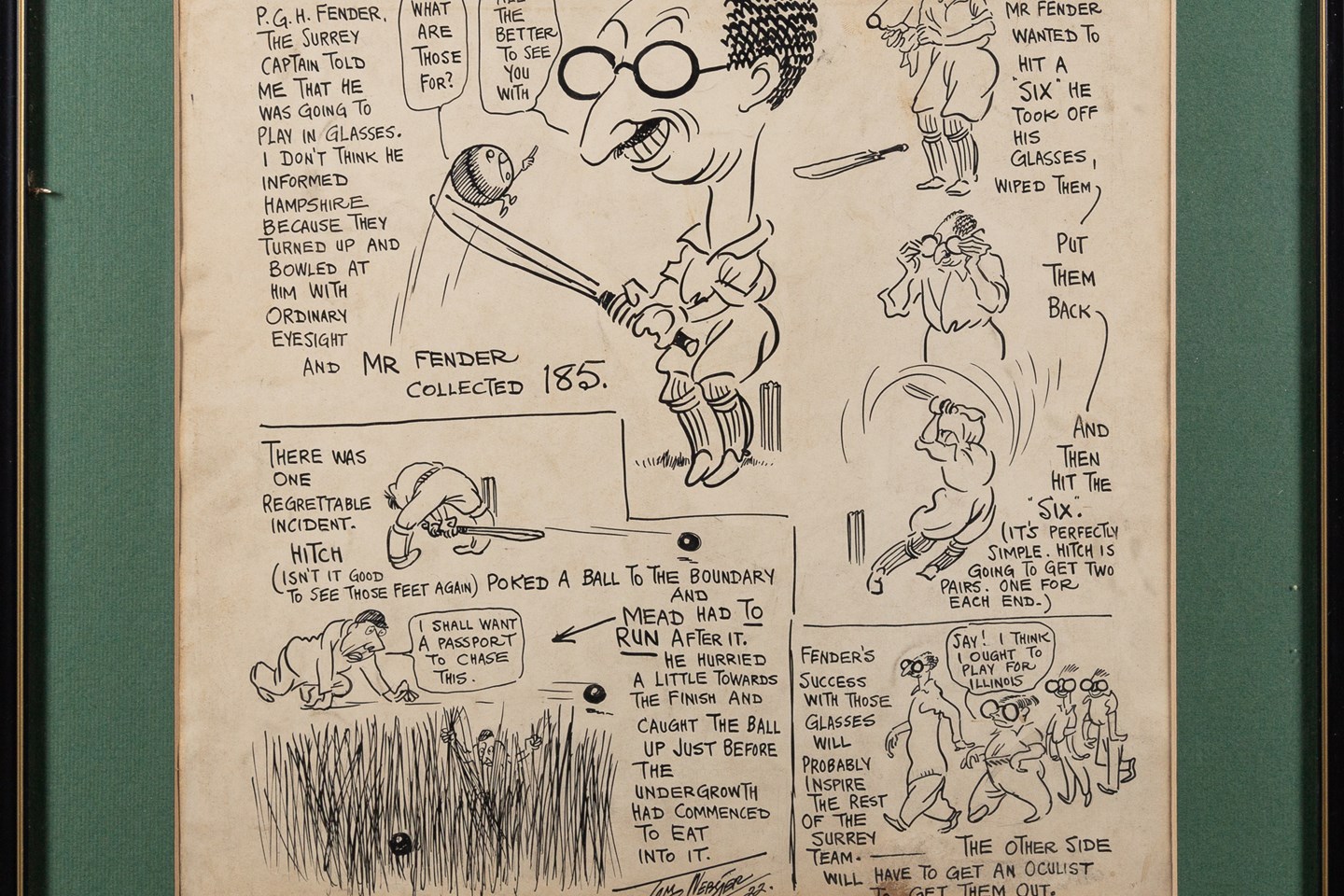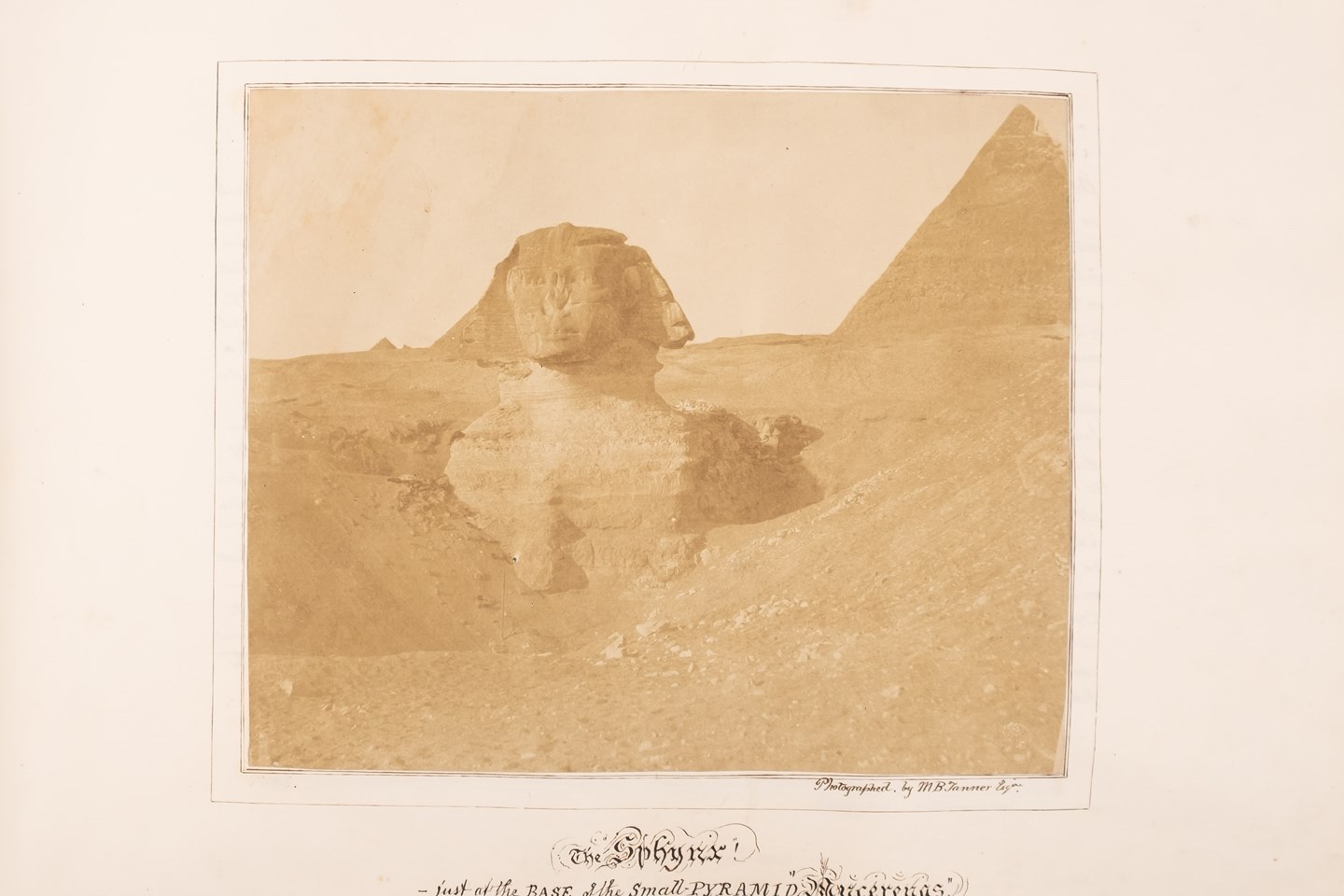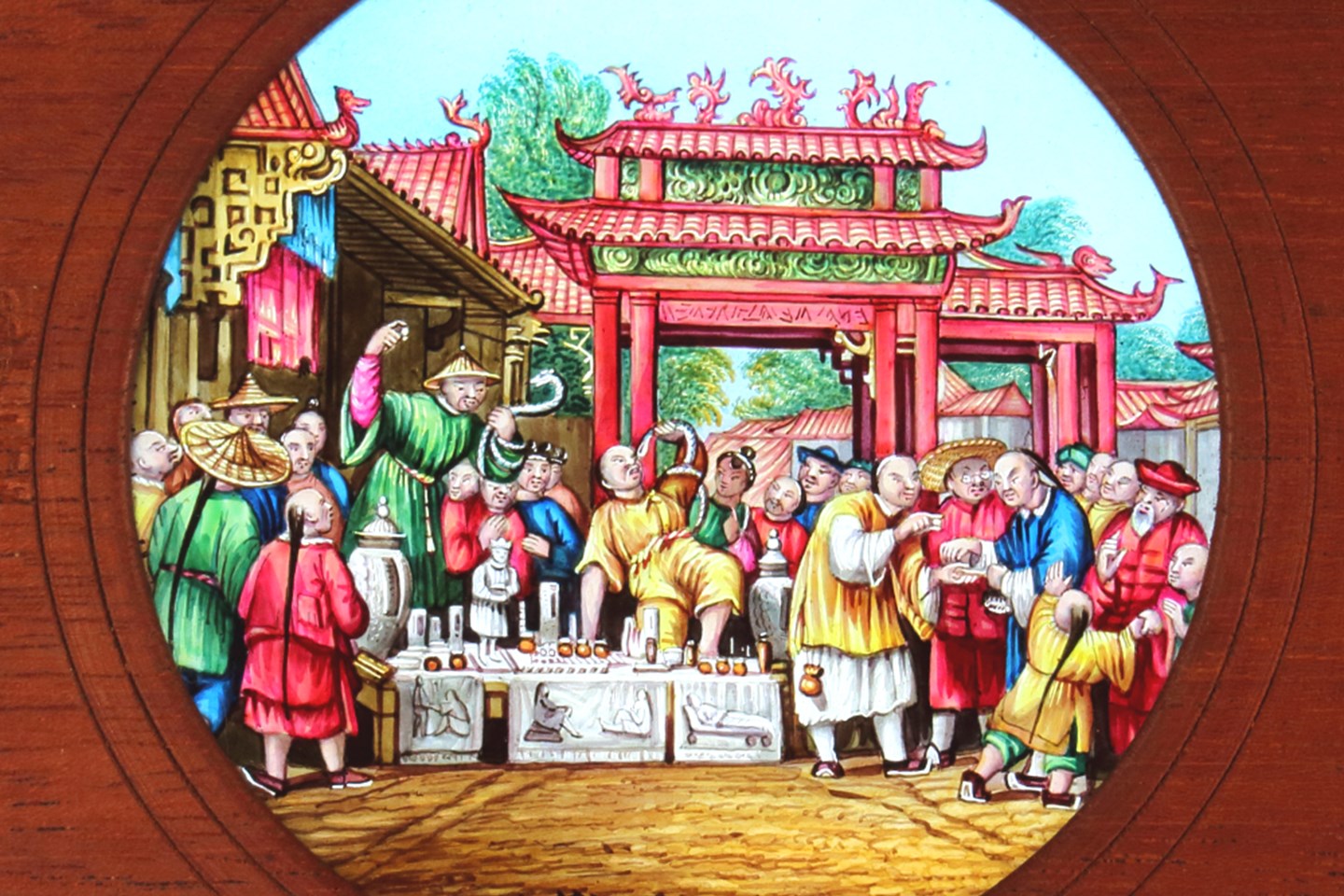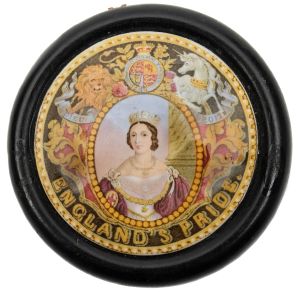
An F&R Pratt pot lid depicting Queen Victoria.
What is art, can packaging be art and could you frame toothpaste tubes and gaze pleasingly at them?
Of course, Andy Warhol did his thing with Campbell's Soup cans, but that wasn't actually packaging, but a representation of it. However, some packaging is collected and indeed framed as art in its own right, namely the pottery pot lid.
As the name suggests, it is a lid for a pot, generally circular, made of pottery and predominantly printed in colours. The decorating technique owes much to the genesis of lithography and the discovery in the 1830s that it could be used to add multi-colour decoration to a ceramic body. This coupled with the Staffordshire 'Potteries' ability to produce a commercially consistent product at an affordable price meant that in the following decades companies like Ridgway, Brown Westhead, Moore & Co, Mayer, Cauldon and especially F&J Pratt produced many tens of thousands of these store cupboard objects.
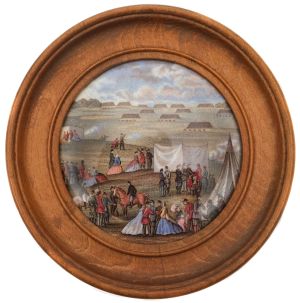
A Rifle Contest at Wimbledon depicted on a Pratt pot lid.
Household names and more modest purveyors took advantage of this colourful packaging to sell meat paste, sundry spreads, relishes, toothpaste, cold cream, hair pomade, toilet powder and even tobacco.
Whilst some of the decoration related to the contents, such as Fry's chocolate paste having a view of Trinidad (where their cocoa beans came from), most decoration bore no relevance to the contents whatsoever.
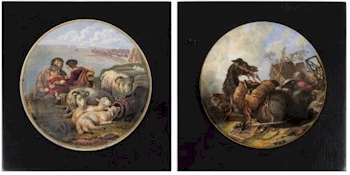
A pair of pot lids 'War and Peace' after original works by Sir Edwin Lanseer.
The subject matter used was broad and varied with over 500 separate designs being recorded and many using source prints reproduced from popular paintings by Sir Edwin Landseer, Philip Wouvermann, Sir Joshua Reynolds, David Teniers and Thomas Gainsborough, so it seems little wonder that many of these utilitarian lids made the short transition to being art.
Of course, unlike bespoke paintings, pot lids are at the modest end of the price scale, but as proto-advertising, they certainly reflect socio-historic values and what made Mr Average part with his cash can certainly provide a window on his life.
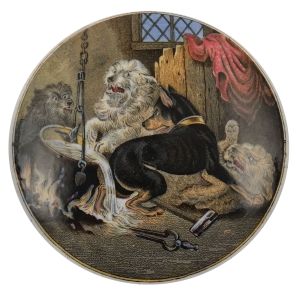
A Pratt pot lid 'A Pretty Kettle of Fish', sometimes called 'Lobster Sauce'.
Some of the earliest pot lids featured a multitude of views of Pegwell Bay in Kent. One wonders why this randomly selected seaside town was such a hit? Its popularity stems from an 1830 visit by Princess Victoria to nearby Ramsgate where in common with others she enjoyed snacking on seafood.
Her first Royal Warrant on accession was issued to Tatnell & Sons Purveyors of 'potted shrimps in the ordinary'. Royal patronage made this delicacy very popular: if it's good enough for HM then its good enough for you, and over time twenty three different Pegwell Bay designs were used.
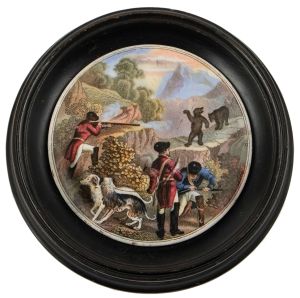
A Bears' Grease pot lid entitled 'Shooting Bears'.
Much rarer are those pot lids decorated with bears. Bears' Grease was considered up until the beginning of the 20th century as an effective treatment for hair loss under the naïve assumption that bears are hairy, therefore their rendered fat applied to the scalp would promote vigorous hair growth. The illustrated example is derived from a print entitled Bear Hunt in the Pyrenees that appeared in the London Illustrated News in January 1853.
Another popular group relates to exhibitions starting with the 1851 Great Exhibition. They were a mix of commerce, art and industry and were an entirely appropriate subject matter for aesthetic packaging and may even have been especially produced for retail at Crystal Palace.
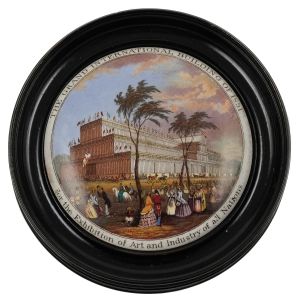
A TJ&J Mayer pot lid: Grand International Buildings 1851.
Needless to say others followed suite and there are examples for the 1853 New York Exhibition, the Paris Exhibitions of 1867 and 1876 and were still in production for the Chicago World's Fair of 1893.
Other decoration includes royalty and worthy individuals (in what might have been seen as the first example of product endorsement), literary subjects (Shakespeare features heavily), famous landmarks and flora and fauna.
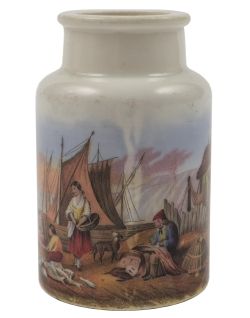
A Mayer Pegwell Bay subject fishpaste jar: Mending the Nets.
Whilst pot lids account for the largest volume, other jars and decorative boxes were given the same treatment and all found buyers, so the step from being an effective method of making your product stand out, to being a pleasing way to decorate other wares, was an obvious one and in time plates, bottles, candlesticks, mugs, jugs, tableware and even the humble potty were given an artistic face lift.
This range of competitively priced brightly decorated pottery was probably ideal for the aspiring classes, but rather lacked finesse in comparison to the porcelain wares of Worcester, Derby and Wedgwood so I suspect there probably was a degree of Victorian snobbery towards it.
I don't know whether pot lids were framed whilst still in production, but a century or so later, I come across them regularly framed as art works in their own right, which considering they were made 150 years ago as disposable packaging is no mean feat.
- Bearnes Hampton & Littlewood
- Pot Lids
Commemorative Ceramics was written on Tuesday, 2nd May 2017.









